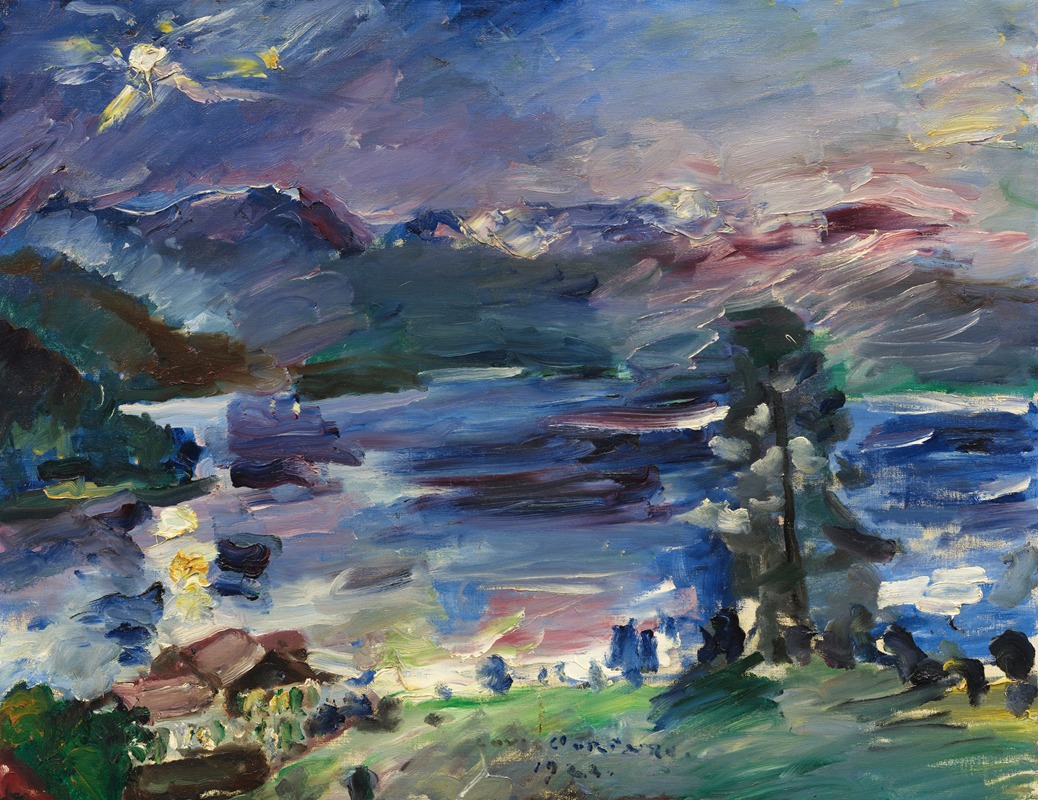
Walchensee, aufgehender Mond
A hand-painted replica of Lovis Corinth’s masterpiece Walchensee, aufgehender Mond, meticulously crafted by professional artists to capture the true essence of the original. Each piece is created with museum-quality canvas and rare mineral pigments, carefully painted by experienced artists with delicate brushstrokes and rich, layered colors to perfectly recreate the texture of the original artwork. Unlike machine-printed reproductions, this hand-painted version brings the painting to life, infused with the artist’s emotions and skill in every stroke. Whether for personal collection or home decoration, it instantly elevates the artistic atmosphere of any space.
"Walchensee, aufgehender Mond" (Walchensee, Rising Moon) is a painting by the German artist Lovis Corinth, created in 1919. Corinth was a prominent figure in the German art scene and a leading member of the Berlin Secession, an art movement that sought to break away from traditional academic art and embrace more modern, expressive styles.
The painting depicts the serene and picturesque landscape of Lake Walchensee, located in the Bavarian Alps. This lake was a favorite subject for Corinth, who spent considerable time in the area during the later years of his life. The scene captures the tranquil beauty of the lake under the light of the rising moon, with the surrounding mountains and sky bathed in soft, luminous colors.
Lovis Corinth's style in this painting is characterized by his use of vibrant colors and dynamic brushstrokes, which convey a sense of movement and emotional intensity. The composition of "Walchensee, aufgehender Mond" reflects Corinth's mature phase, where he combined elements of Impressionism and Expressionism to create a unique and personal artistic language. His ability to capture the atmospheric effects of light and color is evident in the way the moonlight interacts with the landscape, creating a harmonious and almost mystical scene.
The painting is notable for its emotional depth and the way it reflects Corinth's personal connection to the natural world. After suffering a stroke in 1911, Corinth's work took on a more introspective and expressive quality, and his landscapes from this period often convey a sense of contemplation and reverence for nature. "Walchensee, aufgehender Mond" is a prime example of this shift in his artistic approach.
Lovis Corinth's work, including "Walchensee, aufgehender Mond," has been widely exhibited and is held in high regard by art historians and collectors. His ability to blend different artistic influences and his mastery of color and composition have secured his place as one of the leading figures in early 20th-century German art.
Today, "Walchensee, aufgehender Mond" is part of the collection of the Bavarian State Painting Collections (Bayerische Staatsgemäldesammlungen) and is displayed at the Neue Pinakothek in Munich, Germany. The painting continues to be admired for its beauty and its representation of Corinth's artistic vision and technical skill.


















